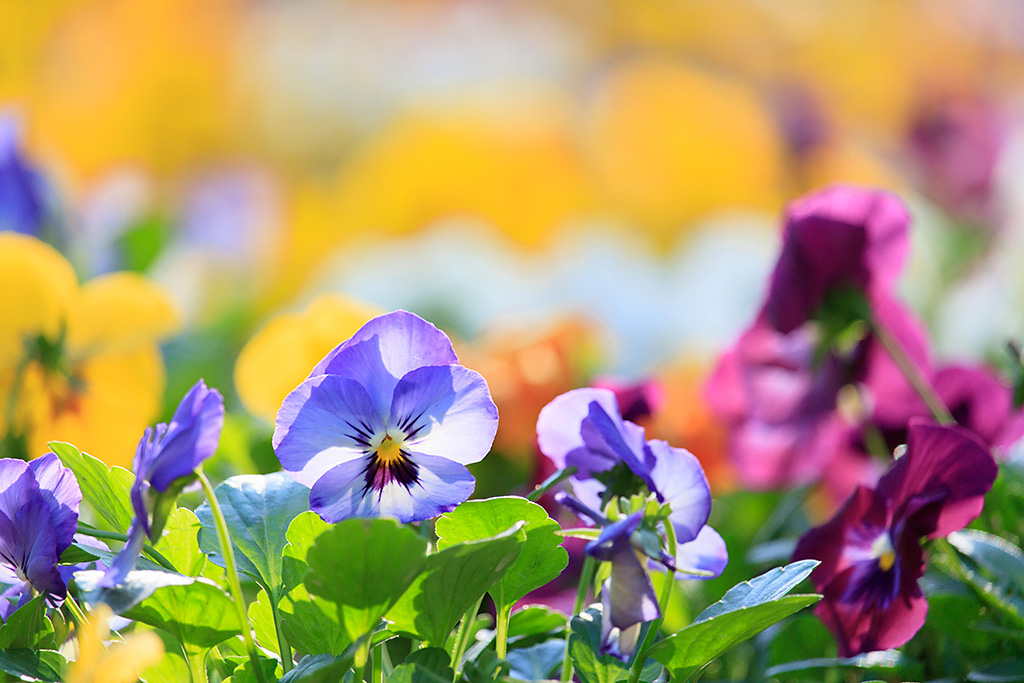Lens FAQ #6: My Zoom Lens Doesn’t Have a Very Bright Maximum Aperture. How Can I Get a Large Bokeh Out of It?
By satisfying several conditions, a large bokeh can be obtained even with a standard zoom lens. Find out more as I explain how to do so with the help of some photos of flowers. (Photo & text by: Kazuo Nakahara)

4 conditions for obtaining bokeh
There might be some people who think that bokeh cannot be created with a standard, entry-level zoom lens because most such lenses do not have a bright maximum aperture. However, this is not true! A large bokeh is possible if you put some thought into it.
Many people often forget that the amount of bokeh in a photo does not depend on the f-number alone. How close you shoot at the telephoto end, as well as how close you are to the subject all play a part as well. Also, bokeh becomes larger the further away from the focal plane you get, so the object for which you wish to use the bokeh effect should be located as far away from the subject as possible.
In other words, in order to create the largest bokeh possible, a good idea would be to combine the following 4 conditions:
---------------------------------------------
Conditions to obtain a large bokeh
(1) Use a small f-number
(2) Choose a focal length in the telephoto range
(3) Get close to the subject
(4) Search for a background in the distance
---------------------------------------------
These conditions, along with a shooting angle that creates depth, can help you achieve a surprisingly large bokeh even if your lens does not have a very bright maximum aperture. If your lens is very "dark", for (1), use the minimum f-number (maximum aperture), and for (2), zoom all the way to the telephoto end. For subjects such as flowers, making sure that the photo captured is bright (e.g by using exposure compensation) can also help to make the bokeh effect appear larger and softer .
Shooting at f/5.6 while observing the conditions for obtaining a large bokeh

EOS 750D/ EF-S55-250mm f/4-5.6 IS STM/ FL: 250mm (400mm equivalent)/Aperture Priority AE (f/5.6, 1/320sec, EV+0.7)/ISO 400/WB: Auto
I adopted a shooting position that was level with the flowers and used the maximum aperture at the telephoto end, and managed to create depth in the background. The result: A large, soft bokeh.
Shooting at f/5.6 without observing the conditions for obtaining a large bokeh

EOS 750D/ EF-S55-250mm f/4-5.6 IS STM/ FL: 55mm (88mm equivalent)/Aperture Priority AE (f/5.6, 1/80sec, EV0)/ISO 320/WB: Auto
You won’t be able to obtain a bokeh effect if you shoot aimlessly, even if you use the same f/5.6 aperture as the previous photo. Also, iIf you take the picture at an angle from above, the ground becomes the background, and there is a lack of distance between the main subject and the subjects you wish to capture with bokeh. This not only results in less bokeh, but also in less appealing colours.


Kazuo Nakahara
Born in Hokkaido in 1982, Nakahara turned to photography after working at a chemical manufacturing company. He majored in photography at the Vantan Design Institute and is a lecturer for photography workshops and seminars, in addition to working in commercial photography. He is also a representative of the photography information website studio9.
http://photo-studio9.com/

Digital Camera Magazine
A monthly magazine that believes that enjoyment of photography will increase the more one learns about camera functions. It delivers news on the latest cameras and features and regularly introduces various photography techniques.
Published by Impress Corporation

































